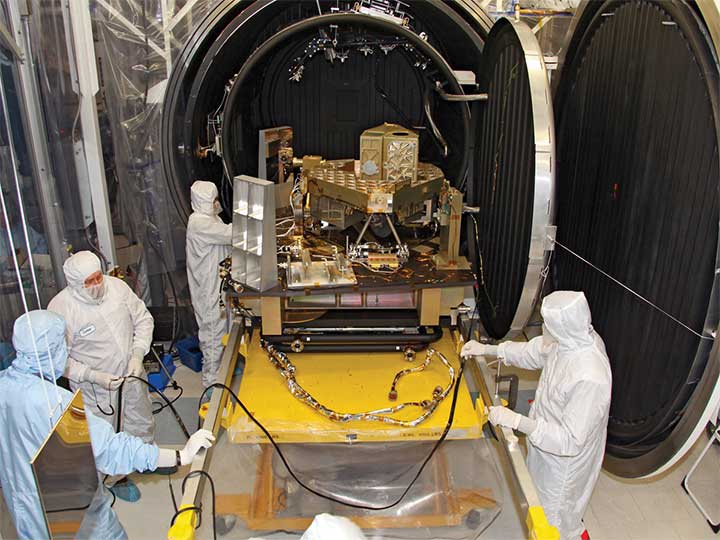Canada's Space Policy Framework
GOVERNMENT ACTION
The Government of Canada recognizes the importance of space and supports the Canadian space sector.
Advancing our national interests through space systems, and promoting our domestic space industry efficiently and with foresight, requires a sure grasp of goals, coherent vision, and coordinated planning. If we are to make the most of our efforts in space, these investments cannot be piecemeal.
Accordingly, the Government of Canada will strategically coordinate its priorities and commitments in space, and put its existing resources to best use. To that end, the Government will adopt a new framework that will provide the foundation for the next phase of our country's space program.
Attuned to current and future developments in space, the policy rests on five core principles, from which four areas of action flow. Together, these provide the framework that will inform decision making on space and the optimum use of government resources.
The policy is an integral part of the Government's overarching strategic goals of jobs and growth, sovereignty, security and the advancement of knowledge.

CANADIAN SPACE INDUSTRY
Canada's space industry employs about 8,000 highly skilled men and women and generated $3.33 billion in revenues in 2012, almost half from exports. The industry is highly concentrated in a few large world-class firms and 200 small- and medium-sized enterprises positioned across the global value chain.
INUVIK GROUND STATION

Inaugurated in 2010, the Government of Canada's Inuvik Satellite Station Facility is poised to become a data hub for global Earth observation stations and Arctic research. Ideally situated to receive data from a growing number of polar orbiting remote sensing satellites, the facility already has dishes operated by the Swedish Space Corporation and the German Space Agency, while the Government of Canada is expanding its infrastructure, under contract with SED Systems Ltd., with a state-of-the-art antenna. The Government of the Northwest Territories has also committed to construct the Mackenzie Valley Fibre Optic Link, which will provide the communications infrastructure to relay data from the Inuvik Station to global centres nearly instantly. At present, data packages have to be put on discs and sent by courier.
JAMES WEBB SPACE TELESCOPE
Successor to the Hubble Space Telescope, the James Webb Space Telescope is set to launch in 2018. It will be the world's premier space observatory of the next decade. Canada's contribution to the James Webb Space Telescope was built for the Canadian Space Agency by COM DEV, while the Canadian science team is led by the Université de Montréal.
